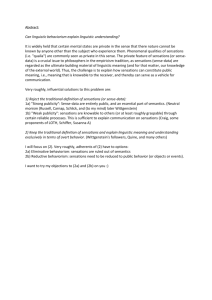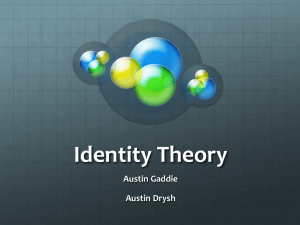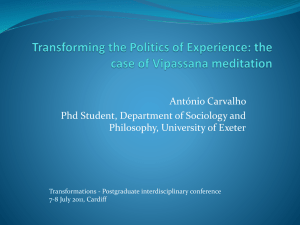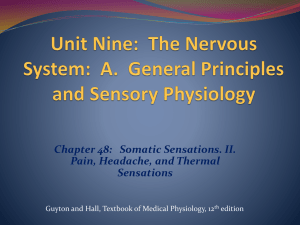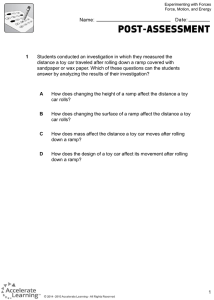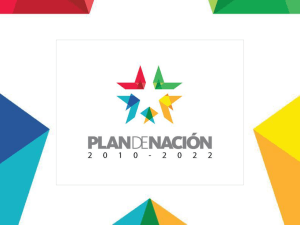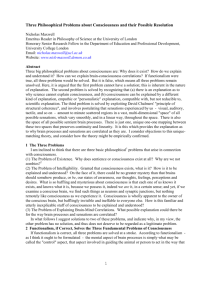skill 5:amp down or ramp up now
advertisement
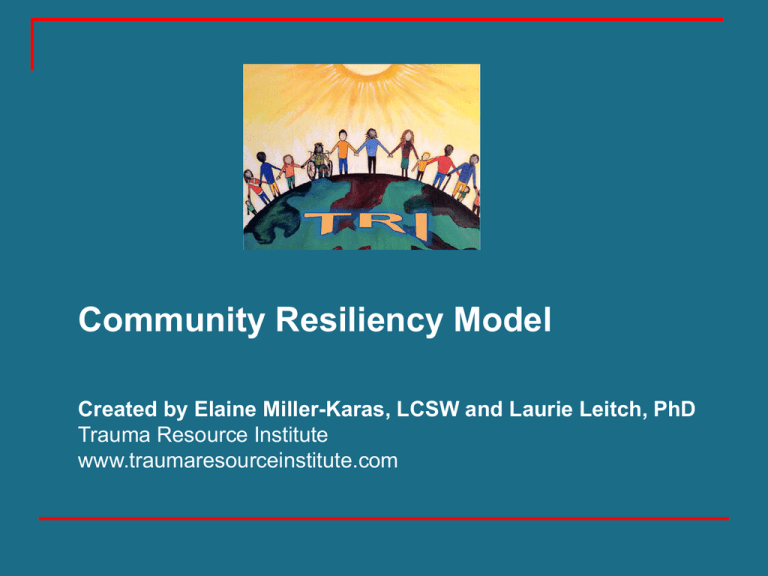
Community Resiliency Model Created by Elaine Miller-Karas, LCSW and Laurie Leitch, PhD Trauma Resource Institute www.traumaresourceinstitute.com Slides by Miller-Karas (2012) Community Resiliency Model Skills TRACKING refers to monitoring of sensations RESOURCING GROUNDING Using positive or neutral factors to create non-traumatic sensations Being fully present in the moment SHIFT AND STAY RESOURCE INTENSIFICATION Expanding details of the Resource to build the strength of positive sensations Shifting to a resource and staying in the resource state AMP DOWN OR RAMP UP NOW Strategies to get back R-Zone Slides by Miller-Karas&Leitch 2011(c) Trauma Resource Institute 2 SKILL 1-Tracking Tracking refers to monitoring sensations Tracking is the foundation for stabilizing the nervous system The person learns to distinguish between sensations of dysregulation and sensations of balance within the nervous system Rather than inquire about feelings, sensations are explored Slides by Miller-Karas&Leitch 2011(c) 3 Skill 1:Tracking • Observation of the client’s nervous system and biological responses Heart rate, breathing rate, muscle tension, temperature, body movements, facial expression The self-tracking What do you notice happening inside?” Slides by Miller-Karas&Leitch 2011(c) 4 SKILL 2: Resourcing External Resources include positive experiences and memories and can include the people, places, activities, skills, spiritual guides, hobbies and animals we know and love Internal Resources include experiences, values and beliefs that sustain, support and that give confidence and inner meaning personal characteristics such as kindness, compassion and humor body resources such as strong legs, good sleeper, straight spine, healthy GI system Slides by Miller-Karas&Leitch 2011(c) 5 27 SKILL 2: Resourcing Building resources helps expand the ability to bounce back into your Resilient Zone. Positive sensations and memories bring a direct experience of well-being that helps stabilize the nervous system A person learns that there are sensations in the body that are less uncomfortable, neutral, or positive 6 Skill 3: RESOURCE INTENSIFICATION Ask 3 or 4 additional questions about the resource to expand the sensations connected to the resource When describing a resource, it makes the memory stronger Which helps to shift awareness from unpleasant sensations 7 Slides by Miller-Karas&Leitch 2011(c) SKILLS 2&3: Identifying Resources 1. Write down three resources 2. Circle one resource 3. Write down 3 or more details about your resource 4. Read your resource and the three details about your resource 5. As you read about the resource, notice what happens on the inside 8 Skill 4:Grounding Is the direct contact of the body with the ground or with something that provides support to the body 1. Grounding is necessary to be in the present and to experience safety in mind, body and spirit. 2. The person is encouragds to track sensations while finding a comfortable position. Grounding can be accomplished while: Sitting on a chair/sofa/ground, or Standing against a wall or hard surface, on Lying on the floor/bed/sofa/ground Slides by Miller-Karas&Leitch 2011(c) 9 Skill 4:Grounding If our relationship to the earth is not safe, then all other relationships do not develop in the best ways When we are grounded, we have a sense of self in relationship to space in the here and now We are not worried about the past or the future 10 SKILL 5:AMP DOWN OR RAMP UP NOW Can be used by the practitioner to help a person amp down or ramp up Can be taught to family members to help the a family member get back into his/her resilient zone if he/she is stuck on high or low Slides by Miller-Karas(2012)) 11 SKILL 5:AMP DOWN OR RAMP UP NOW 1. 2. Drink a glass of water Look around the room or wherever you are, paying attention to anything that catches your attention 3. Name six colors you see in the room (or outside) 4. Open your eyes if they have a tendency to shut 5. Count backwards from 10 as you walk around the room 6. If you’re inside, notice the furniture, and touch the surface, noticing if it is hard, soft, rough, etc… 7. Notice the temperature in the room 8. Notice the sounds within the room and outside 9. If you’re outside or inside, walk and pay attention to the movement in your arms and legs and how your feet are making contact with the ground. 10. Push your hands against the wall or door slowly and notice your muscles pushing. Slides by Miller-Karas&Leitch 2011(c) 12 SKILL 6: SHIFT AND STAY CRM Wellness Skill A skill that is taught as a wellness skill for self-care. The person learns to shift from distress, discomfort and/or overwhelm To a resource To grounding To a sensation that is more comfortable or neutral To the AMP DOWN or RAMP UP strategies Shift and Stay is a skill used when a person becomes bumped out of their resilient zone 13 Slide by Miller-Karas (2012) THE BODY HAS A WISDOM THAT WORDS CANNOT SPEAK WWW.TRAUMARESOURCEINSTITUTE.COM Slides by Miller-Karas&Leitch 2011(c) 14
